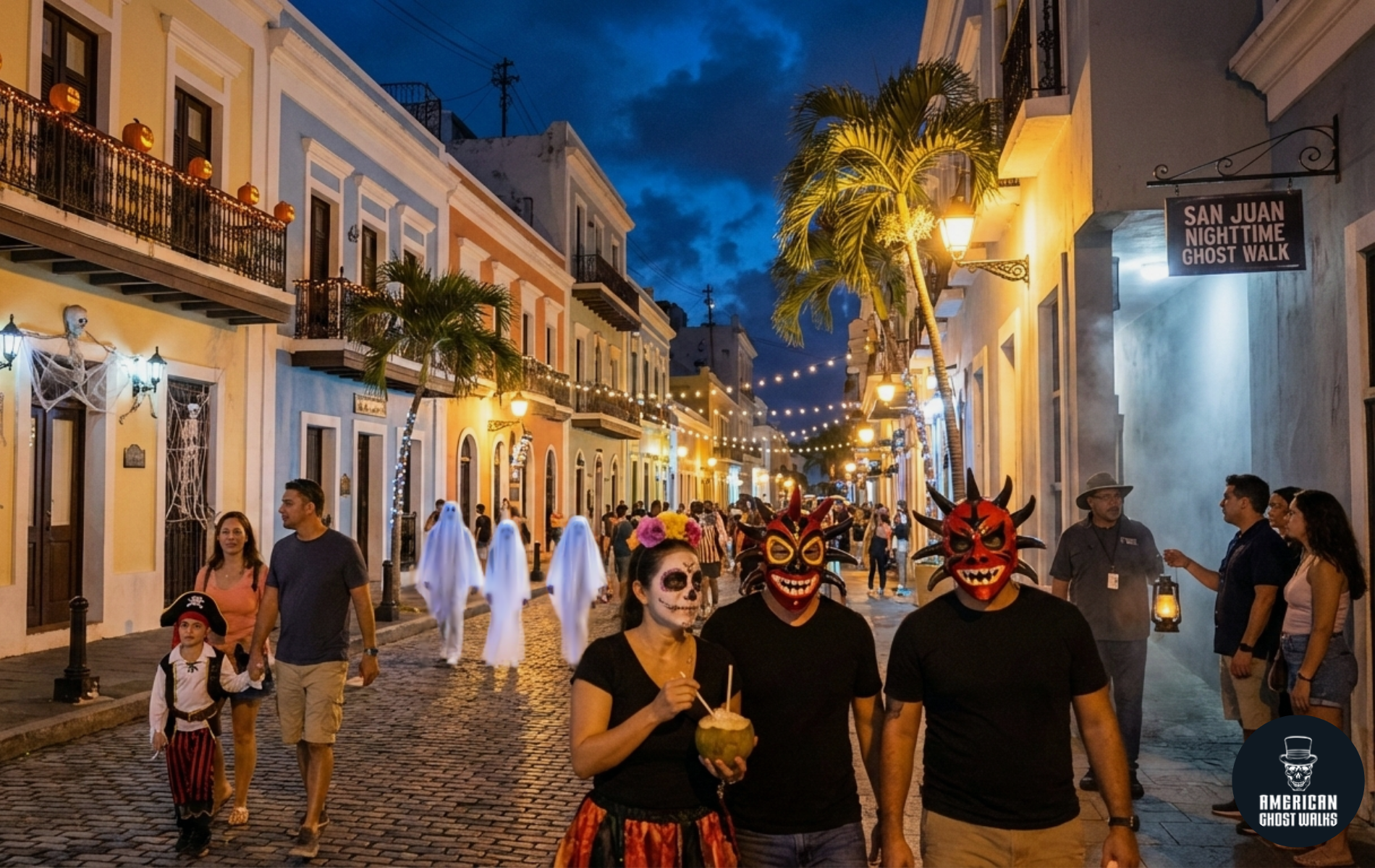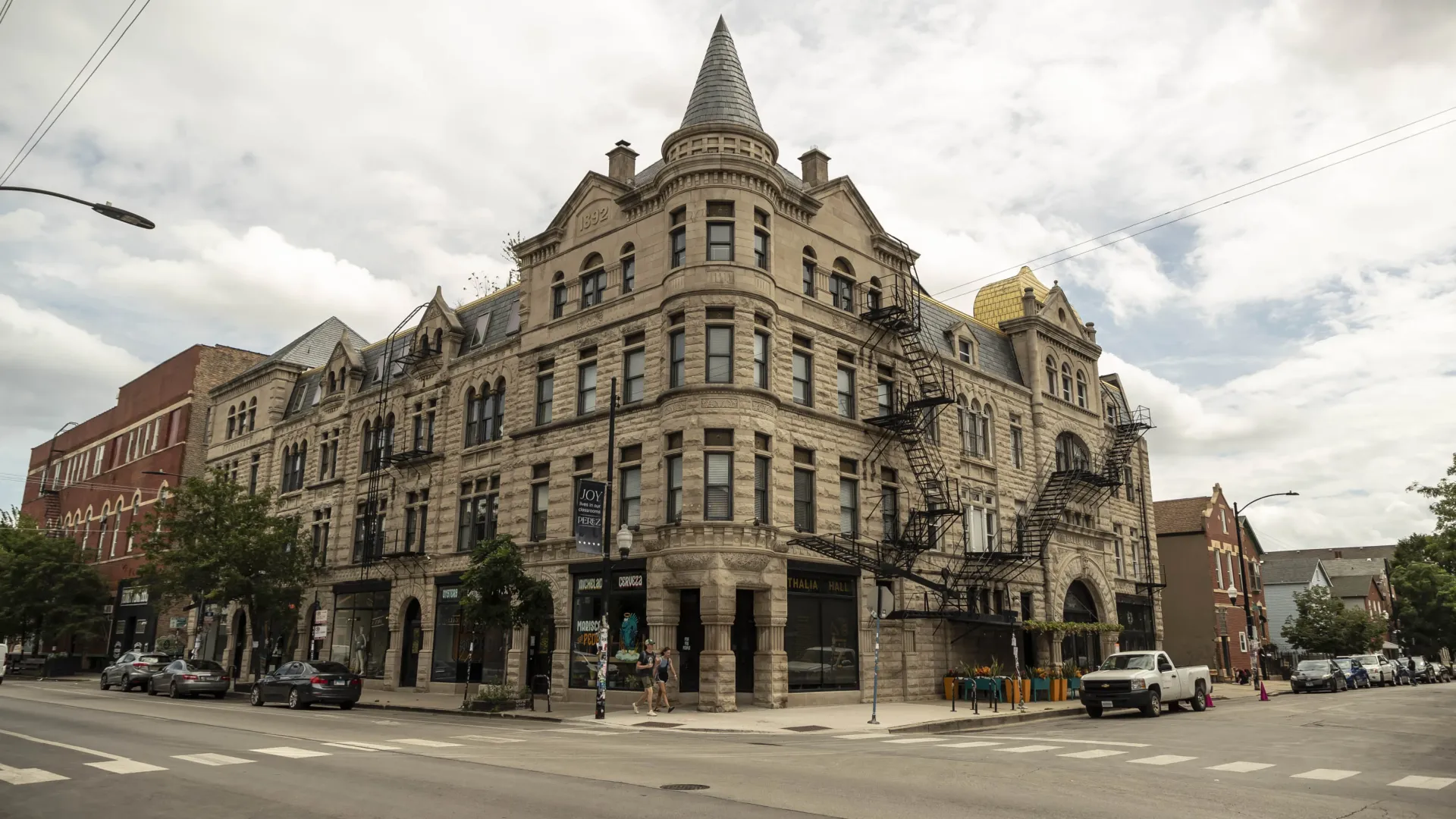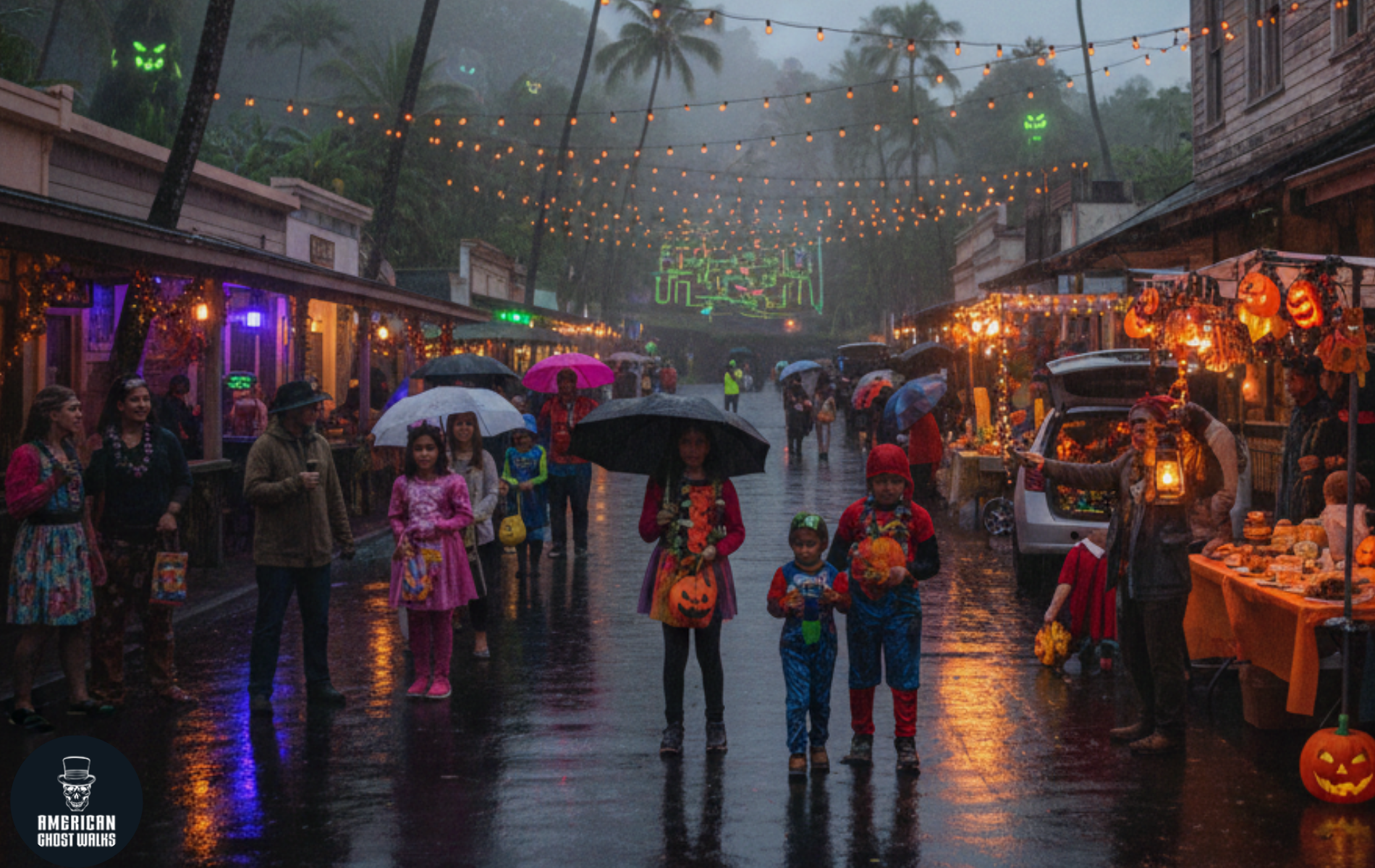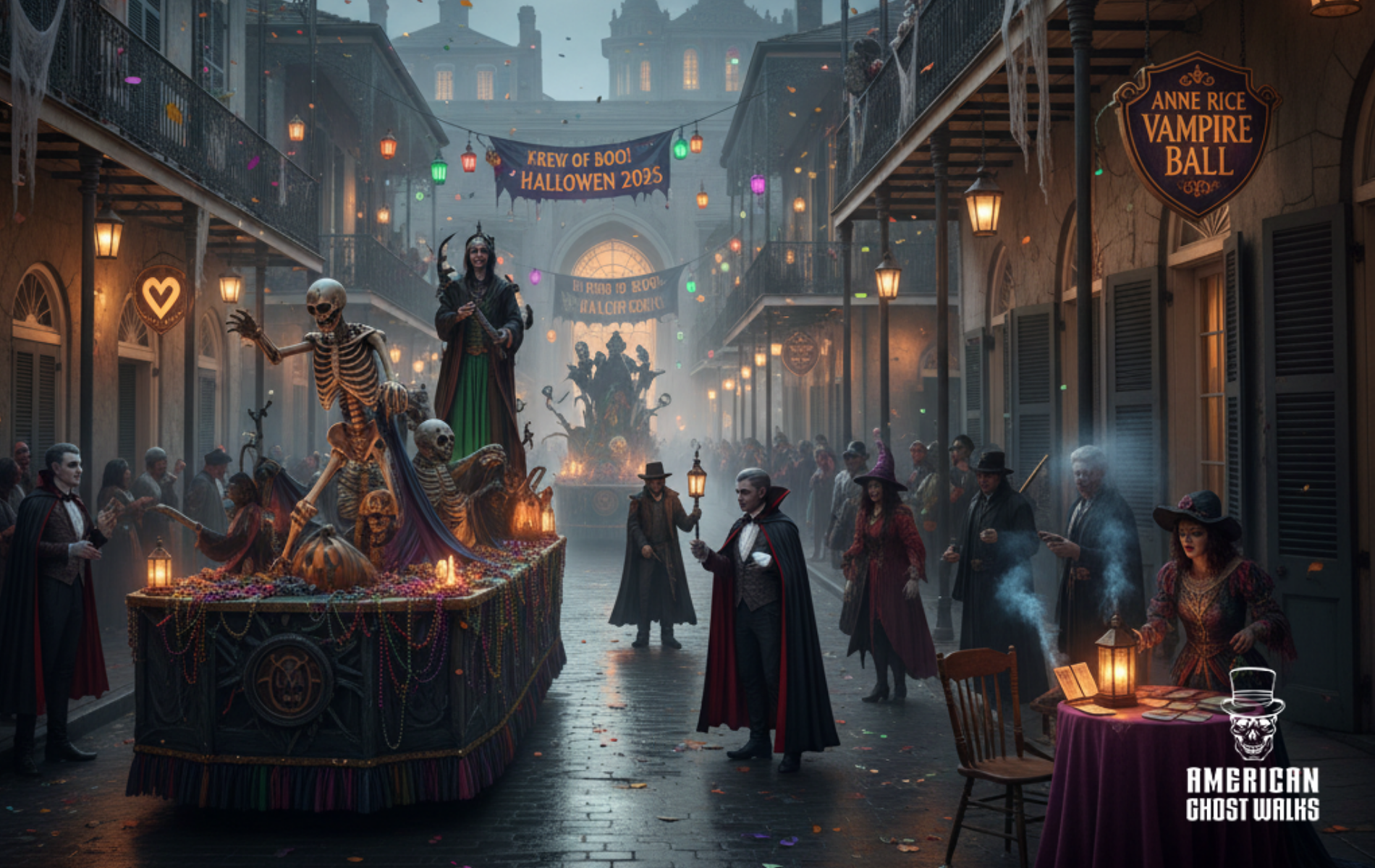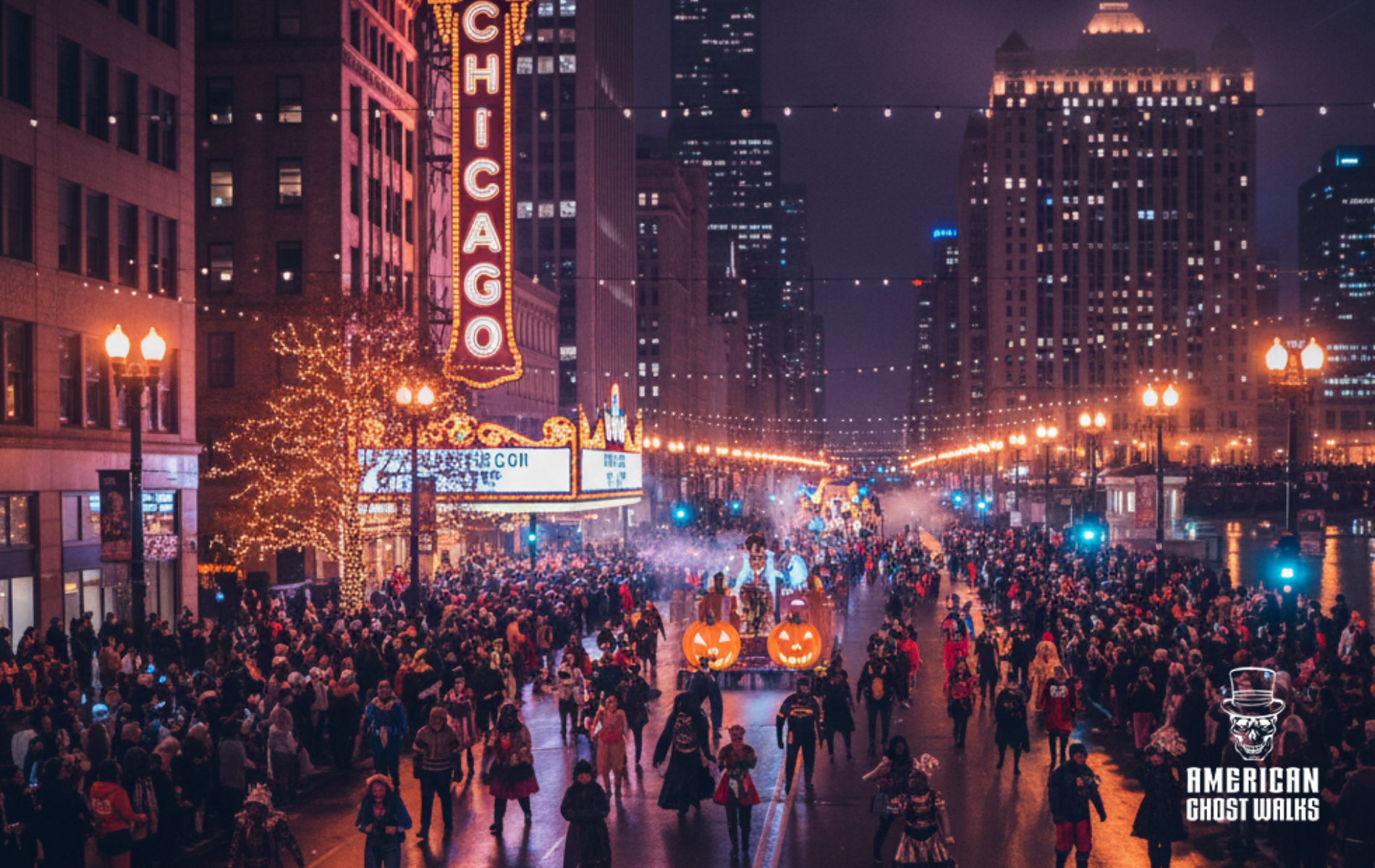The Bridge of Sighs: Chicago's Lost Suicide Bridge
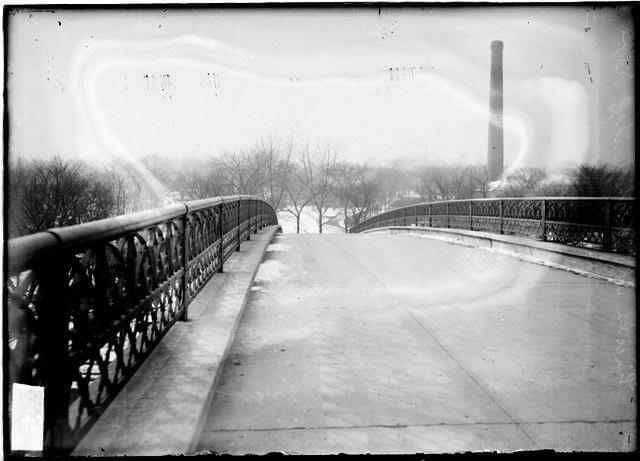
The Statues of Lincoln Park
It is an interesting coincidence that the bronze monuments in Chicago’s Lincoln Park—one of the city’s most haunted places—comprise a sort of “supernatural sculpture garden,” where one may learn a good deal of the paranormal history of America by strolling through the walkways.
The
Lincoln Memorial, behind the Chicago History Museum, commemorates the man who was famously connected in life to a spiritual world through dreams and premonitions and whose phantom funeral train still pulls into Chicago as May dawns each year, as the real thing did after his assassination in 1865. Each year, around the first of May, trainspotters, Lincoln enthusiasts and others congregate along the tracks or on the Roosevelt Road bridge to watch for the infamous specter, said to be manned by a literal skeleton crew and with a phantom Union guard standing by. They say that if you see the train, time stands still—literally. If you are wearing a timepiece of any kind, it will stop and never work again.
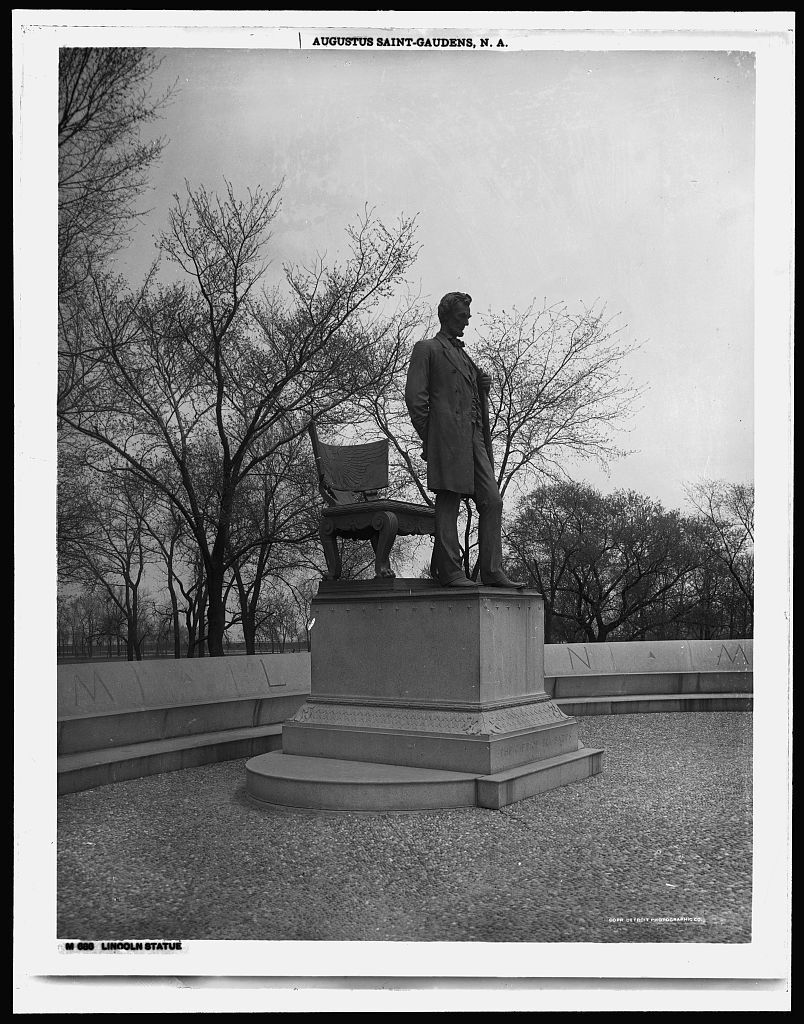
Benjamin Franklin is commemorated in Lincoln Park by a memorial which stands on the north side of the pedestrian tunnel between the museum and the ball fields. When Franklin served as America's ambassador to France, he was on the committee that reviewed Doctor Franz Friedrich Anton Mesmer's therapeutic technique of "Animal Magnetism", which would eventually become the hypnosis that we know today. When Spiritualism was in its heyday, Franklin’s spirit was a frequent guest in séance parlors; one medium even "channeled" him to write a full book from beyond the veil of death.
General Ulysses S. Grant’s statue commands the vista over the south pond on the west and Lake Shore Drive on the east, towering over a city that greatly lauded him in life. Few know, however, that Grant was known to have had numerous “presentiments” during his lifetime, including precognition of his becoming head of the American Army. His wife, Julia, shared his gifts, even successfully urging her husband to leave town with her on Good Friday, 1865, when they were scheduled to attend a performance of My American Cousin at Ford’s Theater with President Lincoln in attendance.
On the other side of the drive, near the Lake shore, a monument to Swedish spiritual philosopher Emmanuel Swedenborg commemorates a man who many call the father of paranormal research, directly influential in the founding of the Society of Psychical Research, and its offshoot, The American Society for Psychical Research.
Lincoln Park - A Haunting Beyond the Tragedy of the Great Fire
If you are familiar with the history of Lincoln Park , you would understandably assume that the haunting of Lincoln Park and its Zoo is wholly the result of the destruction of the City Cemetery by the Great Fire and the abandonment of the more than ten thousand bodies, left behind in unmarked graves in its aftermath.
But you might be wrong. For it is estimated that, from before the Great Fire until 1919 over one hundred people lost their lives in Lincoln Park, the majority of them the victims of accidental drowning or—most often—of suicide.
Horrific Death of Children by Lake Michigan
From its early days, most of the deaths here were of those—mostly children—who met their deaths on the
Lake Michigan shore off the park or in the Lagoon which stretches between the park and the Lake, just west of today’s Lake Shore Drive. Others made their way to the relative tranquility of the park in desperate straits to poison themselves, drown themselves in the Lake or one of the park ponds, shoot themselves, or otherwise pass from their weariness by their own hands. Most who died by self-inflicted means, however, were the estimated fifty to one hundred souls who jumped—or otherwise did themselves in—from the top of a panoramic steel “high bridge” built over the Lagoon in 1893: a walkway which quickly became known as “Suicide Bridge.”
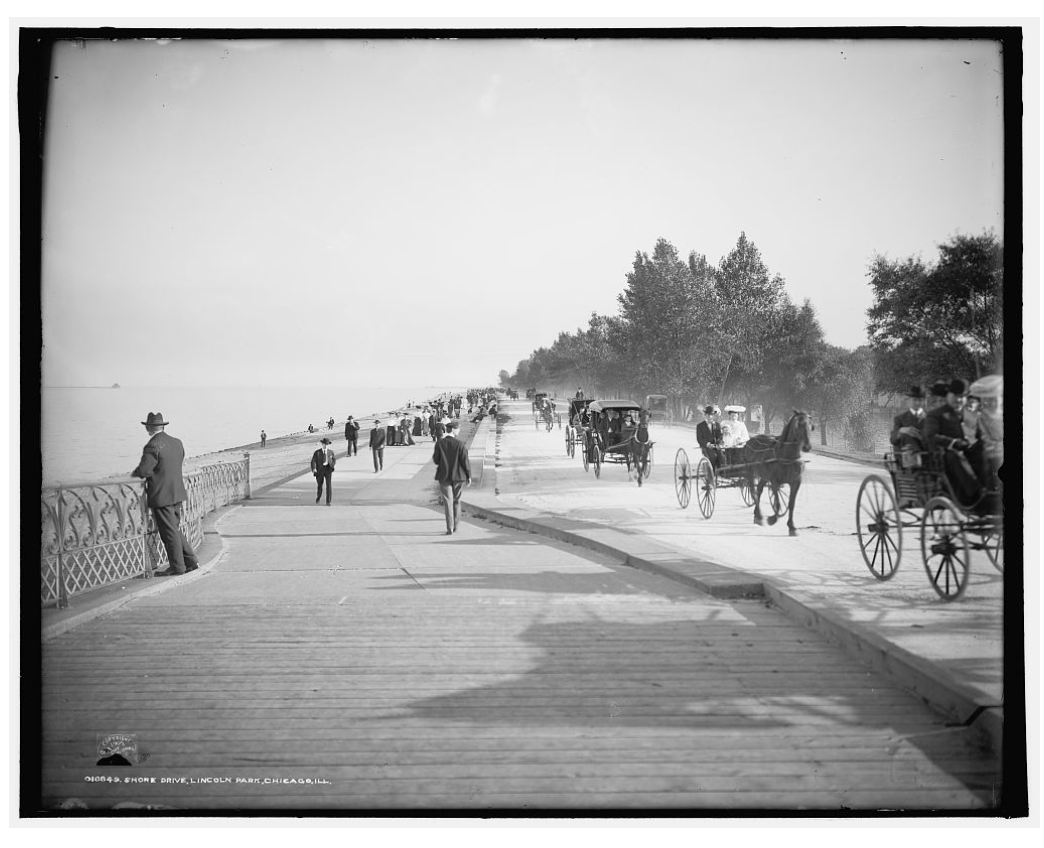
Lincoln Park's Building of the High Bridge
In the midst of this disturbing trend, the Lincoln Park Commissioners announced, in the summer of 1893, the building of a bridge to span the Lagoon and what was quickly becoming a popular carriageway between the Lagoon and Lake Michigan—the future Lake Shore Drive. The bridge would be built at the cost of $20,000 and allow strollers to pass between the park and the lakeshore without walking the mile between Fullerton and North Avenues, the only pedestrian ways to the Lake. The dimensions of the bridge remain a mystery, with estimates that it was four or five stories high, and anywhere from 40 to 75 feet in height. Photographs from the top of the bridge suggest that it was at least towards the higher end of those estimates, with today’s current pedestrian and bike bridge across the Lake Shore Drive a significantly more diminutive structure.
The bridge and other improvements planned for Lincoln Park seem to have been largely inspired by the World’s Fair of 1893—which featured lagoons spanned by illuminated bridges, flanked by pristine gardens. I have heard it said that the High Bridge in Lincoln Park was so “high” so that, on fair days, strollers could view the faraway Fairgrounds in Jackson Park. Later, after the Fair closed, the famed Ferris Wheel would be temporarily located to Lincoln Park.
Suicides from the High Bridge
Later newspaper reports claimed that the first suicides from the High Bridge began in 1893, soon after its completion and opening. However, I have not yet been able to find any publications documenting these early events. Death did not take a holiday during the bridge building or during the immediate aftermath, however.
In mid-December of 1893, probably around the time the bridge was completed, a Russian refugee committed suicide in Lincoln Park after fleeing the czar’s army. He had been living in fear of capture, terrified of the punishment that would await. He had been told he would be sent to Siberia for the rest of his life and that his wife and children would be prevented from every seeing him again.
Timeline of Tragic Deaths on the High Bridge
Deaths of 1894-1897
On June 13, 1894 the body of a man was found in either the Lagoon or North pond near Fullerton Avenue in Lincoln Park. The man turned out to be a Maywood man down on his business luck who had drowned himself.
The next day a druggist by the name of Mr. Merrill was found near death in Lincoln Park suffering the effects of morphine poisoning. Dying later at Alexian Brothers Hospital, a Coronor's jury returned a verdict of “suicide while despondent.”
In early July 1895 the body of a machinist named John Barnet was found in the Lagoon opposite the Grant Monument at about 1:15 in the morning. The body was discovered by a police officer on his park rounds, when he saw something floating on the moonlit water. He rowed out to the object and discovered the badly decomposed corpse, which he towed to shore. The discovery was the end of a search which had gone on for days, after the dead man’s wife received a letter, addressed to “My Dear Wife and Children,” in which Barnet expressed affection for his family but an overpowering feeling that, due to his business failures, his life wasn’t worth living
Later that month, a man named John Tris was watching the boat races on the Lincoln Park Lagoon, standing on the bank near the High Bridge. At 3:30, without warning, Tris jumped into the water. Despite its depth of only five feet, his body did not resurface. A number of men who were waiting their turns to race responded to shouts for help from those who had seen Tris jump. The men dove under the surface to locate his body, a feat which took nearly thirty minutes. When he was finally recovered, Tris was long dead.
The next month, August 10, 1895, little August Schaefer, 11, fell into the Lagoon and drowned while watching some workmen dig a trench near the boat house.
Later that month, the body of a man, identified as that of John Peterson, was found in the Lagoon, a bullet wound in the center of his forehead. The man had gone missing for days from the boarding house where he lodged. On the banks of the lagoon, police found his coat and hat and a revolver with one mpty chamber. A recent immigrant, he had been unable to find work.
Less than a week later, l Ella Olsen, a twelve year old girl, was found floating in the Lagoon on a Friday afternoon. The previous day, the girl and her mother, along with another woman, had gone to the park to enjoy a picnic. The girl had run away from their picnic spot towards the High Bridge, intending to view the park from its summit in search of a better site for their lunch. She was not seen again until her body was discovered on the water the following day.
After a year of relative quiet, 1897 brought another epidemic of deaths in Lincoln Park—most suicides but some accidental. In May three boys were walking along the Lincoln Park Lagoon when one of the boys, Johnnie Scott, tumbled in. His companions attempted to drag the boy out but were strartled by the approach of a police officer and fled, dropping the boy back into the water in their retreat, after which he drowned.
In July, in view of dozens of spectators, a man paused at the top of the High Bridge took off his coat and hat, and then leapt to his death in the water below. In the pocket of his coat was a note reading "Tired of life; no money; no work; no home.”
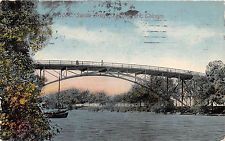
Two days later, a twelve-year-old girl named Annie Schreiber was playing the Lagoon’s edge when she slipped and fell, drowning moments later.
Later that year, several took their lives in Lincoln Park, including a woman named Maude Jennings, who jumped from the High Bridge in November after a small quarrel with her mother.
On the last day of the same month, a maned named W. A Clark drowned himself in Lincoln Park after desperate attempts to find work failed. His wife later said that, on the morning of his disappearance, he left the house with tears in his eyes.
Barely a week later, in early December, 1897, a man named John Schwinen leapt from the High Bridge to crash through ice which had formed early in the season, drowning below the surface.
Coining of the Name "Suicide Bridge"
The day after Schwinen’s death newspapers reported that the Lincoln Park Commission was discussing what to do about the rash of suicides from the Lincoln Park High Bridge, which distressingly had gained the nickname “Suicide Bridge”.
“The last suicide,” remarked a reporter, “has called the attention of the Park Commissioners to the unusual favor that their sight-seeing structure seems to afford people searching for a spot to end their lives . . . “ One of the commissioners remarked that the number of suicides was relatively small compared to the number of people who enjoyed the bridge, but the commission’s secretary said that something had to be done. There had been talk of boarding up the bridge entrances until “this peculiar mania …died out” or of tearing down the bridge. No one seemed to think these measures would stop those bent on killing themselves, but they did believe they would do it elsewhere and “save the reputation of the park.”
It wasn’t only political leaders who voiced concern over the suicides in Lincoln Park. The next Sunday after the Commissioners’ meeting, a local pastor preached on “The Fatal Bridge.” In his sermon, the Rev. James of the Pilgrim Temple Baptist Church drew lessons from the sensational span, proclaiming:
Many of you have walked over it and admired its artistic features and its solidness. And yet persons have used that bridge for their own destruction. So it is that the gospel, which was ordained to be a savior of life, is used by many people as a savior of death unto death. You are horrified at the thought of that beautiful young girl throwing herself from that fatal bridge to a watery death. The country is shocked at the news of that gray-headed man who plunged himself upon the ice below amid the youth skating on its surface. Their physical suicide is horrible, though it is not to be compared with spiritual suicide. But does not a fatality attach to that high bridge? Witness the lives that have been thrown away from it. It is surely rightly named the ‘fatal bridge.’
The Bridge suicides were taking another kind of toll as well: a supernatural one. By February of 1898 sightings of ghosts were so common in Lincoln Park that the phenomenon was reported in the local papers, one reporter writing that cops on the night watch in the Park were asking for transfers because of the strange experiences they were having on duty, both with the ghosts of the High Bridge suicides and others who died before the bridge was built.
A park officer named McCarty was patrolling the zoo grounds one night when he came upon a small park enclosed by a fence. McCarty stopped dead in his tracks and watched as every swing on the playground swung violently back and forth in the wind and two white figures, human in form, glided between them without being struck, their hands waving wildly over their heads.
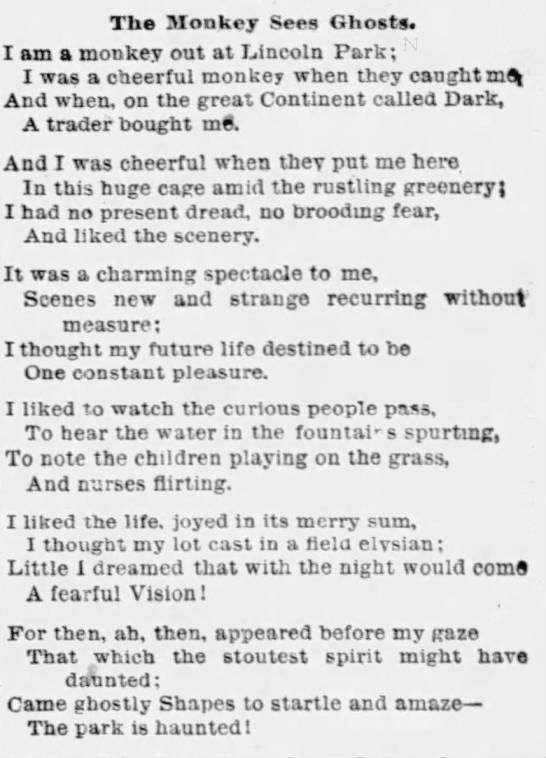
After his initial shock, the officer jumped the fence to confront the figures, who floated through the park and out of his grasp, over the frozen South Pond and past the statue of Benjamin Franklin, then out towards the High Bridge over the Lagoon, disappearing.
Another park officer named Blaul talked about encountering a man robed in Mexican dress, including a wide sombrero, who had “two eyes ….like sparks” When Blaul spoke to the figure he received only a chilling laugh in return. The figure advanced towards the officer and was greeted with gunfire from Blaul. The shots, even at close range, failed to faze the figure, who then disappeared
Reporters were quick to point out, however, that the ghosts at the Park were not necessarily those of the bridge suicides:
The high bridge, with its haunting memory of unfortunates who from its top have flung themselves to death in the lagoon below, is held responsible by many for the appearances which have made the park at midnight an uncanny tramping ground. Other people say that Lincoln Park in all its parts has been a favorite suicide ground for years. especially a favorite dying ground for people who were discouraged because they could not find work, and that there is no more reason for believing the midnight wanderers are the disembodied spirits of high bridge victims than that they are the ghosts of those who have perished by their own hands in different places from the big hill on the north to the Lincoln monument on the south.
That Spring things reached an absurd level at the High Bridge, when Paul Tustln, an acrobat, climbed up onto the bridge rail and tumbled backwards into the water, performing a series of somersaults before striking the water. Bystanders, unaware of his identity at first, thought this the latest in the epidemic of suicides. In fact, Tustln had performed the feat as a stunt; when he swam to shore after his dive, panicked park goers told him they thought he was trying to kill himself, at which Tustln laughed and said, “In blue tights?” He was arrested for disorderly conduct.
Deaths of 1898-1900
Two months later, a laborer named Louis Rockne jumped from the bridge in front of hundreds of onlookers. In his pocket was a library coat and a pawn ticket for his overcoat, which he’d pawned for one dollar. Chicago Tribune July 22, 1898
Not four days later, an unknown man walked through the park gate just north of the Grant Monument and threw himself into the Lagoon. It took several hours of grappling to recover the man’s body.
That September, a woman named Mrs. A.C. Sagert was found floating in the Lake at the east end of the High Bridge. No motive was found for the apparent suicide; her husband believed the recent hot weather had made her delusional.
More strangeness developed at the bridge that winter when, in January of 1899, a woman named Helen Case was found at the top of the High Bridge after disappearing from her home on the south side. Friends claimed she was under the influence of hypnosis by a spiritualistic medium, though the man denied having put the woman under his power.
After a quiet summer, suicide returned to the Park in the fall, when November brought news of an unidentified but well-dressed woman who threw herself into Lake Michigan from the Lincoln Park shore.
Just weeks later, in early December, a woman named Ida Washburn attempted to drown herself and her two small children in the Lake after seven years of marital problems. A police officer found her kneeling on the shore. She said she was praying for forgiveness for what she was about to do. She later told authorities: “For seven years I have been a slave to the whims of my husband. He has beaten me until I was unable to move. …. he beat our-children and called them the vilest of names.”
In late July of 1900, a ten-year old boy named Willie Ashton was fishing with his family on Lake Michigan’s Lincoln Park shoreline when, frustrated by his luck, he made his way to the Lagoon to try for fish there. His blue-banded hat was later seen floating on the water by his mother when she went in search of him. Her screams brought police who attempted to calm her, but she refused to believe her child was dead—even after his lifeless body was dragged from the Lagoon
Later that summer, a man shot himself at the Lincoln monument In Lincoln Park, just behind the present-day Chicago History Museum. When he was first seen by a policeman from the East Chicago Avenue Police Station he was still living and an ambulance was sent for. He was removed to the German Hospital and died shortly after reaching there without regaining consciousness. In his pocket was found a letter addressed to " Nettie," saying: " I have been unable to find employment. I cannot stand this suffering and suspense any longer. Good-by."
Deaths of the Summer of 1901
By the summer of 1901 the contagion of suicides in Lincoln Park had become a serious concern, with many of the opinion that the waves of suicide were copycat actions resulting from “psychic suggestion” spawned by reports of the acts in the newspapers. In Kansas City, a place suffering its own suicide epidemic, a “ban” on coverage of suicides was suggested, with many urging publishers to downplay suicides in their coverage or to climate coverage of suicides altogether. The Chief Deputy coroner of Chicago in response himself agreed with the tendency for copycatting, remarking:
(I)f I should receive notice of a suicide by drowning today. I would confidently expect at least three more within the week with the same features. He said the same was the case with incidents of poisoning by carbolic acid, asphyxiation by hanging and other means. prevail. “If these ghastly things were not published the Idea would not suggest itself to others who are tired of life.” However, he admiited, “I don’t think such a ban could be put on the newspapers of Chicago.
A period of quiet followed the concerns of summer, 1901, though whether this lull reflected a lack of suicides or a lack of their publication is unknown.
Whichever it was, by the following spring, suicide was back in the news when Howard Miller of Koekuk Iowa shot himself through the heart at the Lincoln monument, his body found in the snow on the cold morning of March 30th, his pockets stuffed with handwritten quotes from poems about death.
More followed that spring and summer, including a series of three in August. The last of those was of a man named Albert Samuelson, a Larrabee street tailor whose business had failed. His body was found in the Lagoon under the High Bridge; in his pocket a note read:
No friends, no money, no work; better to die.
Later that year, a teenaged girl named Salina Peterson walked out of her school room at Northwest Division high school, telling her classmate to ‘look for the letters…they will explain everything.” Her body was found partially embedded in the sand immediately south of the Bridge. Among the many notes she had left to family and friends was a letter to her mother reading, “If my body is ever found, my dear mother, bury me in the plainest possible manner, for any magnificence will disturb my rest.”
Other letters explained that her failure to succeed at school had been too much for her to bear, as her mother had tried so hard to support and encourage her. She wanted, she said, to spare her mother any further suffering over her failures.
The following spring a well-known, high end realtor named Z.H. Allen walked to Lincoln Park from his North Clark Street home, sat down, and swallowed carbolic acid, after a period of despondency.
Deaths of 1904-1907
The next year, in September of 1904, an electrician named Stanley Ilumason, walked to the top of the High Bridge and shot himself in the temple with a revolver.
In August of 1905, an elderly man named August Eggers, a widower, tried to slit his wrists while sitting at the arch of the High Bridge. A widower, it was said he had tired of years of loneliness.
The following spring Mrs. Anna. Donnenmeyer, a mother of three small children, drowned herself in the Lincoln park Lagoon, despondent over an apparently terminal illness.
Just weeks later, the body of a Michigan man was found under the High Bridge; police could not be sure if his drowning was accidental or willful.
That summer, in mid-July, two girls walking through Lincoln Park found a woman’s coat with a note pinned to it, reading, “Dear Ed, By the time you receive this I win be resting in the lagoon. I have kept my part of the pact. Be sure to keep yours. FROM YOUR ELLA.” No body, however, was recovered.
That fall, in late October, a man named Alexander Evenoff, just 27, climbed to the top of the High Bridge and shot himself between the eyes
The following spring, Adam Brewster, 40, tried to jump from the High Bridge after telling a park police officer he was “tired of life.” He was promptly arrested.
That summer, June of 1907, two sisters, 10 and 12 years old, drowned in the Lake off Lincoln Park. The girls’ parents believed one had drowned trying to save the other; however, the girls’ grandmother told police she believed the girls had committed suicide because of abuse at home.
A month later, a man and his two daughters drowned in the Lincoln Park Lagoon. Bystanders believed the man had died trying to save his children who had fallen in.
A long span of years followed the summer of 1907, without mention of suicides or accidental deaths in Lincoln Park. One can only speculate if they did not occur or if the papers failed to report them.
After 7 Years with Mentions of Suicides, Deaths Continued in 1912
It would be five years before the next story, when in July of 1912 a man named Harry Meyer climbed onto the rail of the High Bridge with an open razor in his hand, “apparently undecided whether to jump or draw the steel blade across his throat.” While he decided, a police officer placed him under arrest.
The following winter, in February of 1912, a man attempted to take his life by jumping into the Lagoon just south of the High Brdige. When he hit the water, however, he changed his mind and began to call for help. Though police sent motorboats to rescue him, by the time boats arrived his body had disappeared below.
After 1912, the record goes dark, with no suicides or deaths recorded until 1919.
That June, a woman named Violet Martin? Was found, crying, near the Lion House in the Lincoln Park Zoo. “Let me alone…Let me die,” she told police, who found her writhing in pain. She had taken bichloride of mercury. Family had committed her to Dunning Asylum. “For no reason,” she said. The things she had endured there, a place known for its patients’ torments, left death a preferable future. A note on her person said, “I hope I die in peace. I have suffered enough.”
The next month, in late July, Mrs. Bertha Keppler took her two baby daughters from their Hermitage avenue home and led them to the top of Suicide Bridge. She had left a letter at home to her teenaged daughter, reading: “I am tired of everything. My husband has been unkind to me. I am going to end it all.” After being stopped by police from jumping with her children in her arms, she told police she had spent her last pennies on biscuits for her daughters, herself “consumed with hunger,” before taking them to the bridge, determined to end their constant suffering from want.
This attempted murder suicide of Bertha Keppler seemed to be the final straw for Chicago. A week later, park commissioners announce the closure of the entrances to the Lincoln Park High Bridge. “Suicide Bridge” was closed off to public access. Park Superintendent John Cannon announced that the bridge was no longer safe and would likely never be used again.
Still this would not be the end. A final suicide was to come. On September 28, 1919, two months after the closing of the Bridge, a man scaled the barricade, walked to the center of the span and dove the sixty feet into the autumnal waters below. It took several hours to find his body with a grappling hook. The man had a red mustache. He wore well-beaten shoes. His name was Edward Hadick.
Closing of "Suicide Bridge"
When “Suicide Bridge” closed in 1919, many traded reminiscences of the tragedy the Bridge had not only seen but inspired. Stories of love lost, business failed, lives of relentless depression, abuse and violence. Swirling around its dark history were, too, tales of the many accidents and suicides in the Lagoon, the Lake and Lincoln Park as a whole: the city’s former cemetery that had seemed, somehow— to have developed a lust for blood.
Still, as one reporter remarked upon the beginning of the bridge’s dismantling:
All these episodes are . . of yesteryear. The famous arch, which rises forty-two feet above the lagoon, is closed to the happy and the forlorn alike, and the hand of death Is upon it, Perhaps It will not even wait for the wrecker. - It may heed the whispers of those restless ghosts and disappear, like the house of Usher, Into the waters below
Incredibly, Suicide Bridge would still not go quietly. Devoid of any remaining, willing victims, it tried for one more. On November 15, 1919, an ironworker, Frank Watts, was swept into the Lincoln Park Lagoon while working on dismantling the bridge. He was saved by Patrolman William Stift, who jumped into the Lagoon and bore him to shore.
You can discover the history, tragedy, and lingering spirits for yourself at Lincoln Park and the Suicide Bridge on our Lincoln Park Ghost Hunt.
Dive deeper into the mysterious world of hauntings with our curated collection of paranormal investigations and ghostly encounters. Read more stories like this in
“Ghosts of Lincoln Park: A Chicago Hauntings Companion” and “The Original Chicago Hauntings Companion” by Ursula Bielski, these are books of downtown Chicago ghost stories written by our own American Ghost Walks team.
Are you fascinated by the supernatural and craving more spine-tingling tales? Whether you're a skeptic seeking evidence or a believer looking for your next supernatural fix; "American Ghost Books" offers everything from historical haunted locations to firsthand accounts of paranormal experiences. Each book has been carefully selected to provide authentic, well-researched stories that will keep you turning pages well into the night. Don't let your curiosity about the supernatural remain unsatisfied – explore our collection and find your next ghostly adventure today!
Discover why people love our Chicago Ghost Tours by visiting our Google Business Profile Reviews to learn about the experiences shared by our customers.
Find Your Next Paranormal Experience
Milwaukee’s Ghosts of Christmas Past Ghost Walk
Get spirited this holiday season with the ghosts of Christmas past.
from $12 per person




